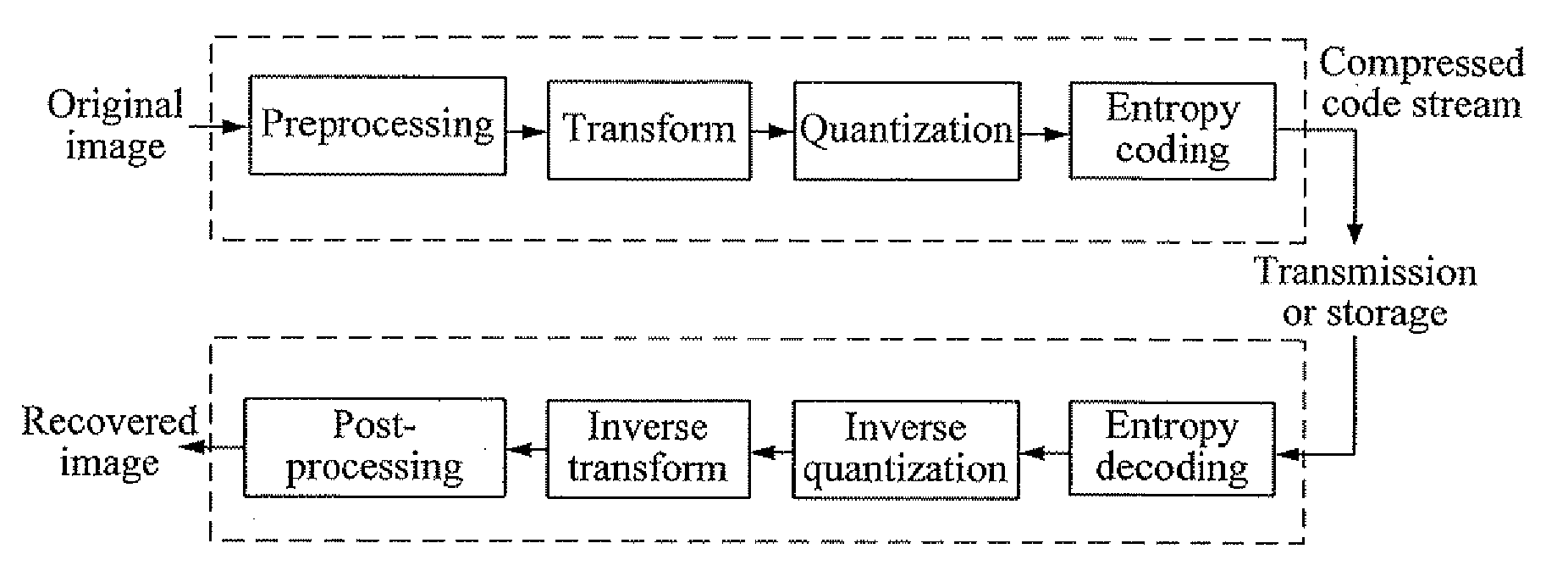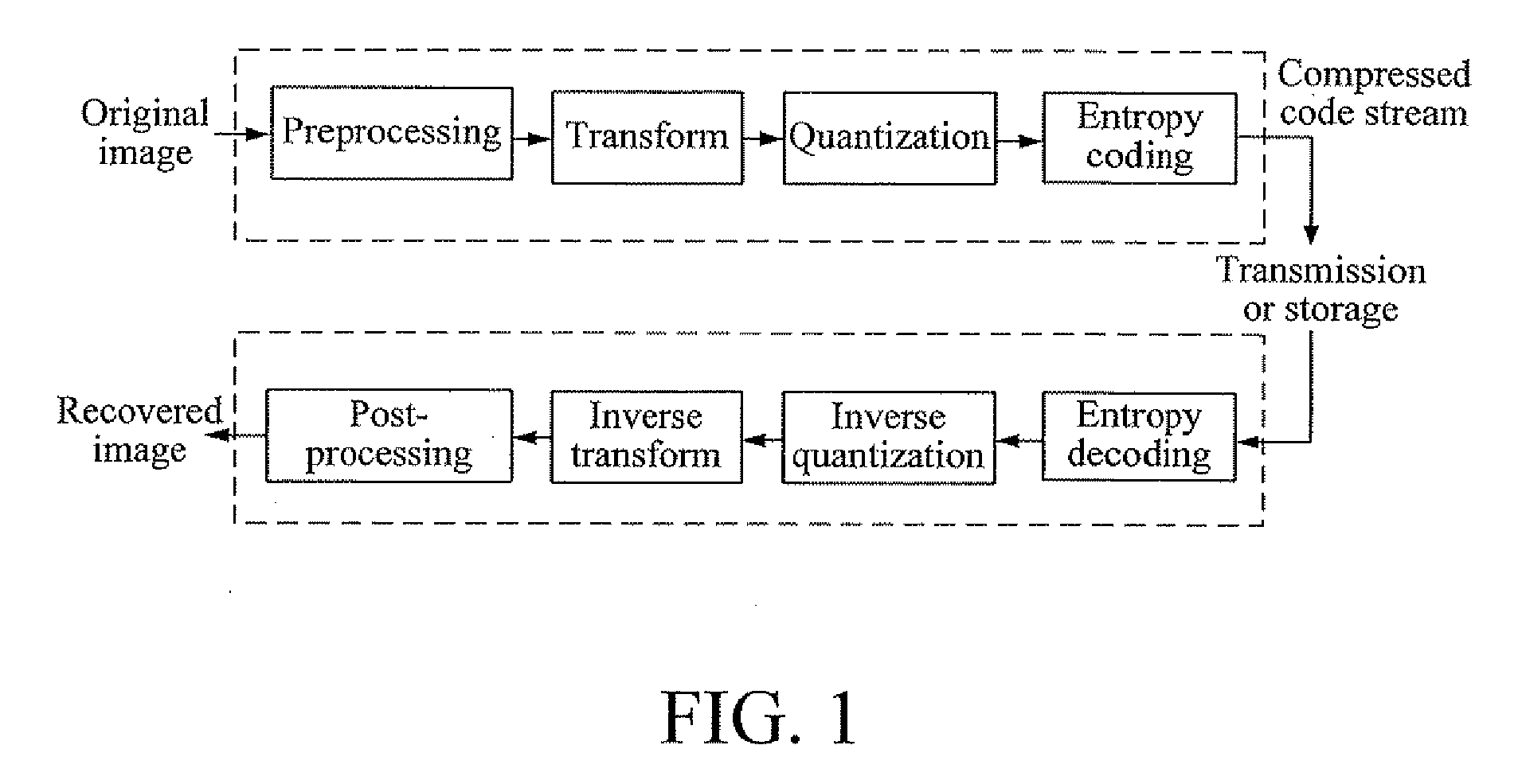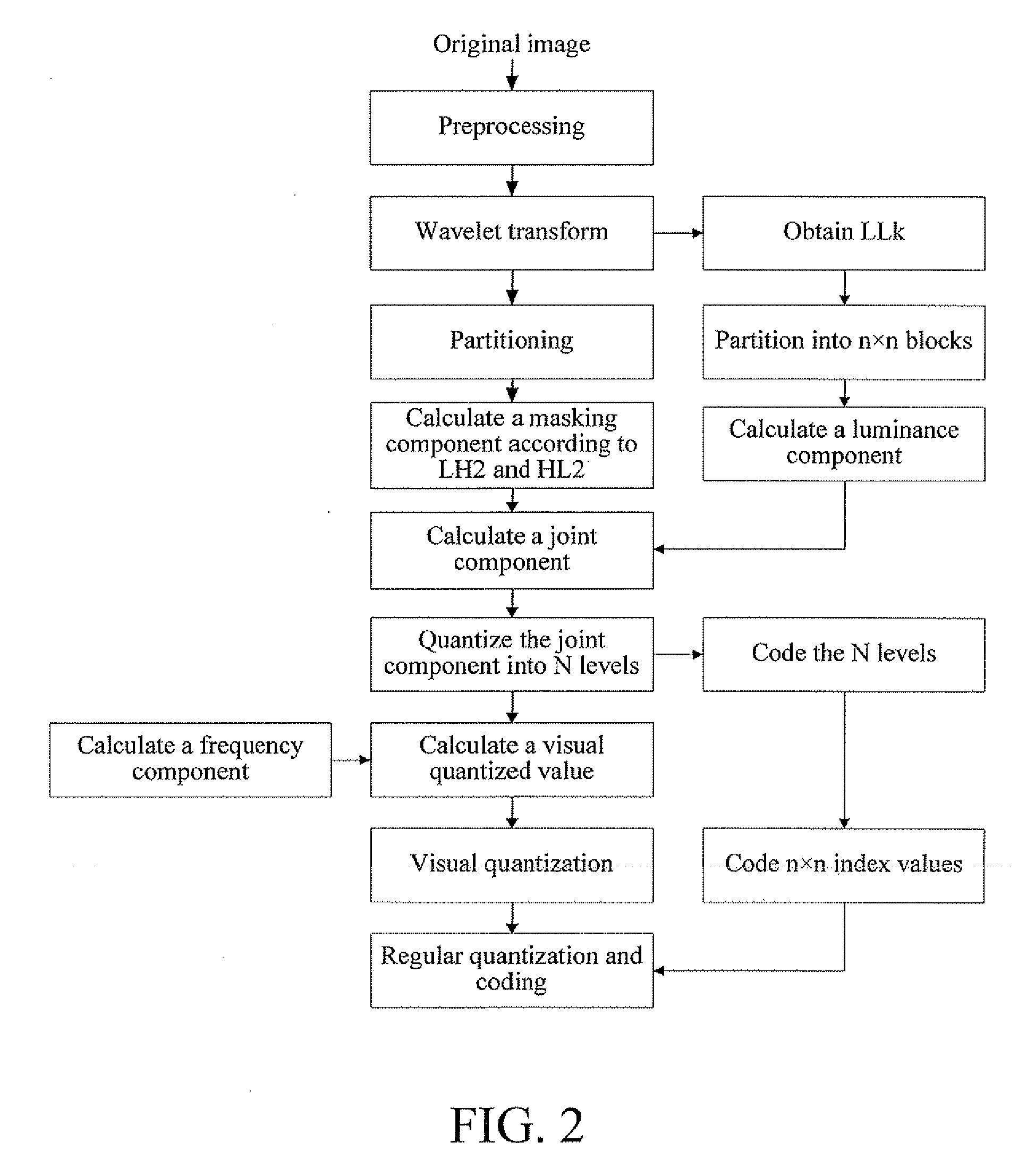Wavelet coefficient quantization method using human visual model in image compression
a wavelet coefficient and quantization method technology, applied in the field of still image compression technologies, can solve the problems of obvious visual distortion of a recovered image, lack of obvious effect in practical applications, and the above methods still have some defects, so as to improve the subjective quality of recovered images
- Summary
- Abstract
- Description
- Claims
- Application Information
AI Technical Summary
Benefits of technology
Problems solved by technology
Method used
Image
Examples
Embodiment Construction
[0032]A wavelet coefficient quantization step in an image compression process is carried out in wavelet domain. To reflect human visual characteristics more directly and accurately, the most ideal method is using an experimental method in psychology to calculate Just Noticeable Differences (JND) of each coefficient through repeated experiments: quantization and inverse quantization are performed on each coefficient after wavelet transform, and only when the quantized value is smaller than a threshold D, the image after inverse transform has no effect on human vision, and human eyes cannot distinguish image distortion. The threshold D is defined as a JND value of the coefficient. After the JND value of each coefficient is obtained, if the quantized value in each coefficient block during quantization can be adjusted according to a proportional relation among the JND values, the recovered image may achieve a good visual effect. This is the guiding ideology of visual quantization. Howev...
PUM
 Login to View More
Login to View More Abstract
Description
Claims
Application Information
 Login to View More
Login to View More - R&D
- Intellectual Property
- Life Sciences
- Materials
- Tech Scout
- Unparalleled Data Quality
- Higher Quality Content
- 60% Fewer Hallucinations
Browse by: Latest US Patents, China's latest patents, Technical Efficacy Thesaurus, Application Domain, Technology Topic, Popular Technical Reports.
© 2025 PatSnap. All rights reserved.Legal|Privacy policy|Modern Slavery Act Transparency Statement|Sitemap|About US| Contact US: help@patsnap.com



